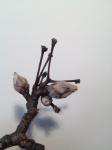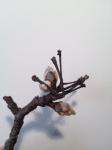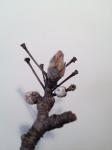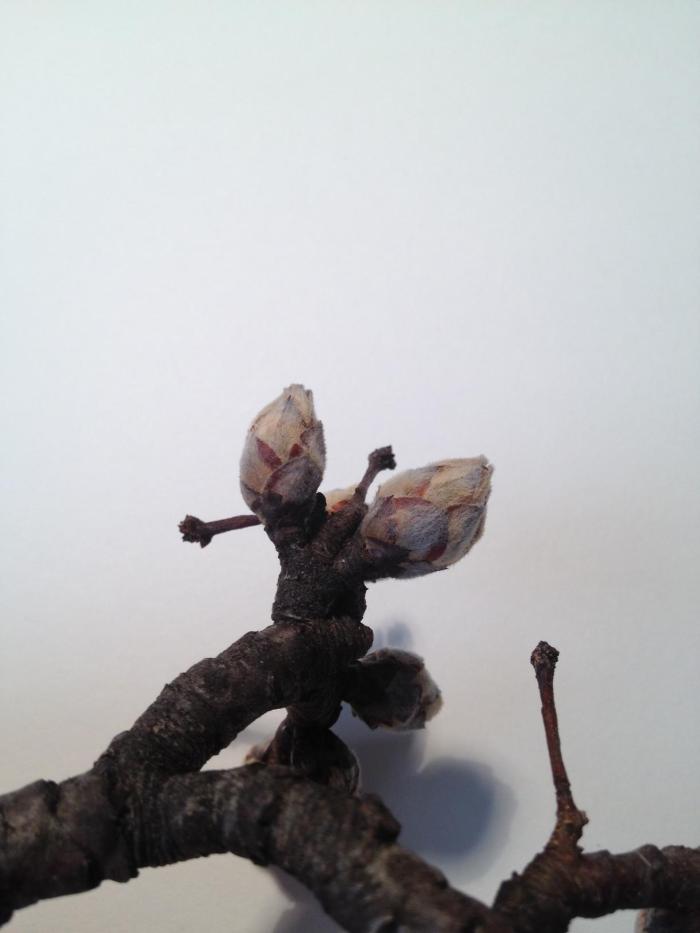Archive for February 2012
Supplying Safe Drinking Water Miracle tree substance produces clean drinking water inexpensively and sustainably
Global Challenges/Chemistry Solutions
Supplying Safe Drinking Water: “Miracle tree” substance produces clean drinking water inexpensively and sustainably
February 27, 2012
Today’s solution uses the seeds of the “miracle tree” to produce clean drinking water. The water-treatment process requiring only tree seeds and sand could purify and clarify water inexpensively and sustainably in the developing world, where more than 1 billion people lack access to clean drinking water, scientists report.
Removing the disease-causing microbes and sediment from drinking water requires technology not always available in rural areas of developing countries. For an alternative approach, scientists looked to Moringa oleifera, also called the “miracle tree,” a plant grown in equatorial regions for food, traditional medicine and biofuel. The research appears in ACS’ journal Langmuir.

Stephanie B. Velegol, Ph.D.,
Pennsylvania State University
Pennsylvania
Here’s the study’s lead author Stephanie B. Velegol, Ph.D., a researcher at Pennsylvania State University:
“Past research showed that a protein in Moringa seeds can clean water. One approach creates water that could not be stored and the other approach is too expensive and complicated. We wanted to develop a simpler and less expensive way to utilize the seeds’ power.”
To do that, they added an extract of the seed containing the positively charged Moringa protein, which binds to sediment and kills microbes, to negatively charged sand.
“The resulting ‘functionalized,’ or ‘f-sand,’ proved effective in capturing lab-grown E. coli and damaging their membranes. The f-sand was also able to remove sediment from water samples. The results open the possibility that f-sand can provide a simple, locally sustainable process for producing storable drinking water.”
Smart Chemists/Innovative Thinking
Smart chemists. Innovative thinking. That’s the key to solving global challenges of the 21st Century. Please check out more of our full-length podcasts on wide-ranging issues facing chemistry and science, such as promoting public health, developing new fuels and confronting climate change, at www.acs.org/GlobalChallenges For the American Chemical Society, I’m Sara Rouhi.
More about This Podcast
DC Considers Making Pesticide History
DC Considers Making Pesticide History
Bill Would Place Nation’s Capitol at Forefront of Pesticide Reduction

Dr. Jerome Paulson of the Children’s National Medical Center testifies on behalf of pesticide reduction on Monday, flanked by Dr. Jennifer Sass of the Natural Resources Defense Council and Paul Tukey of the Safe Lawns Foundation on Monday. (Chris Weiss photos)
WASHINGTON, D.C.–(ENEWSPF)–February 28, 2012. Interviewing witnesses with the precision of a prosecutorial judge, District of Columbia councilwoman Mary Cheh set the stage for an American pesticide showdown Monday afternoon.
In a remarkable session on behalf of the DC Committee on the Environment, Public Works and Transportation the tenured professor of constitutional law at Georgetown University drilled relentlessly into the nuances of a bill, B19-643, “The Pesticide Education and Control Amendment Act of 2012.” Cheh, a Democrat, called every witness, asked every question and displayed extraordinary stamina in a session that grilled 18 individuals and lasted more than four hours.
I’ve sat through dozens, if not hundreds, of similar sessions and never seen anything quite like Cheh’s attention to detail. In addition to doctors and activists who testified on behalf of the bill, Cheh singlehandedly called pesticide professionals, citizens and a government witness.
The general goal of the Pesticide Education and Control Amendment Act of 2012 is to review the myriad chemical compounds used as insect, weed and fungal killers and to eliminate all but the least toxic — except in cases of public health where no “safe” alternatives exist. Of the 18 witnesses called, five spoke in favor of the status quo that allows for unrestricted use of synthetic chemicals and 13 were in favor of some measure of pesticide reduction. SafeLawns testified on behalf of a complete elimination of synthetic chemical fertilizers and pesticides in the landscape, citing several examples of success stories — including nearby Glenstone — where beautiful aesthetics are achieved without synthetic chemical products.
Cheh was especially inquisitive of three doctors who testified on behalf of pesticide reduction strategies.
“Children or adults (exposed to pesticides) can suffer from asthma, heart problems, irregular heart rhythms, recurrent infections, rashes, fatigue, headaches, dizziness, muscle aches, attention deficit-like behavior, altered vision, sense of smell, hearing, taste or touch, balance, Parkinson’s Disease, multiple sclerosis, dementia, seizures, weight gain, altered hormones — including premature puberty, growth disruption, ovarian and testicular dysfunction, thyroid problems, and diabetes,” said Dr. Alan Vinitsky, a pediatrician and internist from Gaithersburg, Md. “There can be increased infertility, increased miscarriages, increased congenital malformations, or a fetus can take on the pesticides, and be saddled with the pesticide burden at birth.”
The representatives of the synthetic chemical pesticide industry, on the other hand, generally pointed to EPA approval of their products as an endorsement for safety “when used as directed by the label.”

Kate Shenk of RISE, right, said she feared her local parks, playgrounds and schools would be overrun with pesticides if the District of Columbia disallows synthetic chemical pesticides.
“So you’re saying that these previous witnesses are not truthful?” asked Cheh of Kate Shenk, a recent college graduate who represented herself as a paid advisor to the Responsible Industry of a Sound Environment (RISE), the lead lobbying industry for the synthetic chemical fertilizer and pesticide industry. RISE representatives appear at virtually all U.S. legislative attempts to reduce pesticides. The organization’s goal is to advance the theory that without the synthetic chemical pesticides then children’s and environmental health will suffer — yet Cheh was clearly not buying into the paid rhetoric.
“We clearly have more work to do here to determine who is telling the truth,” she said.
Though the hearing was preliminary in nature, the bill is historically sweeping in its potential. Although all synthetic chemical pesticides would still be available under the bill in cases of public health situations where no reduced-risk alternatives exist, the spirt of the DC bill calls for elimination of synthetic chemicals except as a last resort.
In reality, the District of Columbia is a small market due to the relatively small population of less than a million people. Yet people on both sides of the argument were clearly aware of the District of Columbia’s strategic importance in the pesticide debate.
In other words, if an elected official in Maryland, or Virginia, or Oregon for that matter, hears that Washington, D.C., has banned or restricted pesticides, it will likely get that politician’s attention.
It’s too soon to tell how the DC legislation will play out, but if the day’s final witness was any indication, then history may be in the making.
“I’m here to testify on behalf of the Pesticide Education and Control Amendment Act of 2012,” said Christophe Tulou, director of the DC Department of the Environment.
Why is that significant?
Because it would be Tulou’s job to do the extra work to monitor, manage and enforce the new pesticide law if it passes.
Most government officials we’ve met in the past have voted against extra hours, tasks and procedures.
Both Cheh and Tulou are saying loudly and clearly: Bring it on.

Christophe Tulou welcomed the challenge of pesticide reduction in the District of Columbia.
Source: www.safelawns.org
Florida Woman Arrested For Allegedly Burning 3,500-year-old Cypress Tree | Fox News
Florida woman arrested for allegedly burning 3,500-year-old cypress tree
A central Florida woman has been arrested for allegedly setting fire to one of the world’s oldest cypress trees, authorities said.
Sara Barnes, 26, of Winter Park, Fla., was taken into custody on Tuesday for allegedly setting a fire to the 118-foot-tall bald cypress tree named “The Senator” in Longwood’s Big Tree Park while trying to use illegal drugs on Jan. 16, MyFoxOrlando.com reports.
Authorities found methamphetamine, scales and other drug paraphernalia during a search of Barnes’ home. She remains jailed on $6,000 bond and is expected to make her initial court appearance on Wednesday.
Ring samples from the tree, according to the Seminole County parks department, indicate that it is roughly 3,500 years old. The tree is a national landmark and is listed with the U.S. Department of Interior, MyFoxOrlando.com reports.
Barnes also took photos of the fire with her cellphone, according to the Orlando Sentinel.
Callery Pear with Scale
Pyrus calleryana with some soft wax scale.
- photo 12
- photo 22
- photo 31
Landscaping worker killed by falling tree in Gooc
Landscaping worker killed by falling tree in Goochland
m.timesdispatch.com | Feb 25th 2012 8:06 AM
A landscaping worker was killed on a job in Goochland County on Friday when he was struck by a tree that apparently was felled by a strong gust of wind.
Javier Hernandez, 56, of Henrico County was working with a crew at a residence in the 200 block of Hill Point Road in the Lower Tuckahoe subdivision when the tree fell and struck him. Hernandez’s adult son also was working at the location, said Deputy Sheriff Chad Hatton of the Goochland County Sheriff’s Office.
Hatton said the incident occurred shortly after 1 p.m. and that a supervisor for the landscaping company called 911. Units from the Goochland emergency services arrived shortly thereafter, and Hernandez was pronounced dead at the scene.
Sheriff’s deputies conducted an investigation and had Hernandez’s body taken to the state’s chief medical examiner, as is standard whenever death from trauma is attributable to an accident.
Original Page: http://m.timesdispatch.com/richmond/db_37626/contentdetail.htm?contentguid=RNOWqu7u
Shared from Read It Later
Phenology in Local Campus Trees
http://m.sciencemag.org/content/335/6071/932.full
A Season for Inquiry: Investigating Phenology in Local Campus Trees
Science 24 February 2012:
Vol. 335 no. 6071 pp. 932-933
DOI: 10.1126/science.1213528
Authors
Michigan State University rightfully claims one of the most beautiful campuses in the Midwest. Each spring, we anticipate a commencement gilded with tulips and crabapple blossoms. In autumn, the campus beams with golden oaks and fiery maples. As a potential subject for inquiry learning, phenology, the study of recurrent natural events, is appealing for many reasons.
Phenologic studies have relatively few logistical constraints compared with many topics in biology. Virtually every habitat imaginable undergoes cyclical or seasonal changes that can be observed through local plants, animals, or other organisms. Documenting phenological patterns can be a straightforward and cost-effective strategy for engaging students in the science of observation with little need for additional equipment or supplies.
The subject of phenology is both timely and scientifically relevant. Interannual variability in factors such as temperature and precipitation can shift the timing of phenologic events by days to months, with realworld impacts ranging from ecosystem function (e.g., plant-pollinator interactions) to regional economies (e.g., agriculture and tourism). Larger-scale trends over long periods of time serve as important indicators of environmental changes, including climate change (1).
Finally, phenology is complex. Seemingly simple processes, such as the changing color of leaves, actually result from myriad interactions occurring across molecular- to ecosystem-level scales. As a complex system, phenology encompasses multiple biological processes that can be explored from diverse disciplinary perspectives across scales of space and time (2, 3) (see the first photo).
Our introductory labs are taught by graduate teaching assistants (TAs) ranging in both teaching experience and disciplinary expertise. As the real face of the lab, TAs bear immediate responsibility for motivating student learning and bringing new instructional strategies into the classroom. They recognized that the labs we had been teaching, in which students followed protocols to confirm known outcomes, did not reflect the biology that motivated each of us to become biologists. We believed that in order to change both the content and culture of our labs, we would need to fully engage TAs as collaborators in the reform process.
Students worked with collaborative teams to develop innovative methods for quantifying leaf color change and abscission in campus trees. Most groups combined both new technology and lower-tech approaches in their data collection strategy.
PHOTO CREDITS: THOMAS HARPSTEAD
In summer 2008, we invited TAs to a 2-day “boot camp” to learn about evidence-based teaching practices (2, 3) and to provide input about goals for reforming labs. TAs said that labs should provide students opportunities to experience how science is done—not as a series of methodological steps, but as a way to ask questions, test ideas, and evaluate evidence. In addition, TAs wanted labs to be more authentic and to reflect the uncertainty of science as it is practiced. Students would pursue questions in which a “right” answer might not be known.
Graduate TAs, Jeffrey Pierce, Todd Robinson, Mridul Thomas, Sherry Martin (left to right), and Kristen Schmitt (inset) collaborated in the original design and implementation of the phenology project in Fall 2008 and contributed as authors on supporting lab materials.
PHOTO CREDITS: THOMAS HARPSTEAD
To incorporate these goals, TAs worked in small groups to rewrite existing labs, framing them as inquiry investigations with explicit and measurable learning objectives. Five TAs collaborated with us to take on the larger task of developing a new, semester-long phenology study, Campus Trees (see the second photo). Inspired by the citizenscientist model of the National Phenology Network (4), we envisioned the outgrowth of a long-term, student-generated database documenting phenology in our local campus trees. Our primary challenge was how to engage students in original inquiry, while at the same time, ensuring consistency and reliability in the student-generated data. Ultimately, we decided that students would mirror authentic ecological research by working collaboratively to design, field-test, and evaluate original methods for quantifying phenologic change.
In order to embed replication within the project design, we restricted the study to 200 trees representing four genera: Acer, Quercus, Malus, and Ginkgo. The Office of Campus Parks and Planning provided maps with locations and identification codes for all trees in the study (5). Students working in groups of four were assigned three trees to study for the semester; each tree was independently sampled by at least three different student groups across different lab sections. Students would not know that others were studying “their” trees until later in the semester.
Students began by locating their trees in the field, making detailed sketches about location and identifying characteristics, and recording tree height and diameter. Students had 2 weeks to brainstorm alternative approaches for quantifying color change and leaf fall and then present their proposals in class. Feedback from classmates and TAs helped students clarify study objectives and solidify their data collection plans.
For the next several weeks, students applied their methods in the field and managed all logistical and troubleshooting issues that arose. After leaves had fallen, students uploaded their final data and methods to our course-management system, LON-CAPA (6). Students used their tree codes to search for and retrieve the data and methods of other groups that had studied the same trees. In a final presentation, students evaluated alternative methods and compared the quality of data produced. Groups wrote short papers based on their analyses and proposed an “ideal” method that would best meet the criteria for (i) producing reliable and accurate phenologic data, (ii) generating high-quality data that can be used in future research, and (iii) feasible implementation in a course enrolling large numbers of students (up to 1000 per semester).
What did we learn from this experience? First, students are capable of achieving far more than we expect. Our concern that students might converge on a common approach was not realized. In fact, students used diverse and innovative methods for data collection [e.g., determining which branches to sample using a Twister spinner, quantifying leaf color with electronic color-pickers
and RGB (red-green-blue) codes] and for troubleshooting (e.g., What should you do if the landscaping staff prunes the branches you were sampling? Should a leaf be counted in your sample if it’s half eaten?). Another concern—that students would regard their own method as “best” and not critically evaluate alternatives—was also not realized. In their final analyses, few groups suggested that they had developed an ideal method and, instead, weighed strengths and weaknesses of multiple methods. TAs noted that by the end of the semester, students better understood how nuances in experimental approach could have an impact on both the nature and interpretation of data—an important benchmark in the development of science literacy (7).
Second, TAs have much to offer in terms of innovating curricula and providing insights that can improve students’ learning experiences. Our TAs cared deeply about the quality of their students’ learning and took pride in their successes. However, in order to realize the potential of TAs to rejuvenate labs, programs must be willing to liberate some creative control and to provide substantial mentoring along the way. Inquiry teaching is not easy and represents a significant departure from traditional, lecturebased instruction. TAs’ transition to inquiry teaching involved discussing real examples in practice. Iterative feedback and a supportive network of peers also helped TAs develop confidence in their classrooms. Our program included TAs in decision-making about curricula and acknowledged authorship on TA-developed materials. This can do much to illustrate the value of TA input, not to mention bolstering TAs’ curriculum vitae and teaching portfolios.
Finally, we advocate for including creativity in the reward structure of college-level biology. Confirmatory labs do not provide sufficient opportunities for students to experience the cycles of failure and recovery that practicing scientists experience as an ordinary part of scientific inquiry. Indeed, learning how to deploy creative strategies for managing the unexpected is a critical part of becoming a scientist yet is rarely reflected in most lab curricula. If we truly want to cultivate a nation of problem-solvers, we must allow students opportunities to wrestle with real problems and be rewarded for conceiving creative strategies for solving them. Our students have shown us they are ready for the challenge.
About the authors

PHOTO CREDIT: KRISTEN KOSTELNIK
Tammy Long is an assistant professor in the Department of Plant Biology at Michigan State University. She earned her Ph.D. at the University of Michigan for her work on the impact of CO2 enrichment on resource allocation in plants. Her current research evaluates the long-term impacts of reforming introductory biology and explores how students use models and visual representations to reason about complex biological systems. Sara Wyse is an assistant professor of Biological Sciences at Bethel University and a collaborator with Long on this project and others. Sara earned her Ph.D. at Michigan State University, where she explored the impacts of alternative professional development models on graduate TAs’ classroom performance. In addition, she researches student understanding of biological systems and the impact of collaborative learning on student understanding.
References and Notes
- ↵
- ↵ National Research Council, BIO 2010: Transforming Undergraduate Education for Future Research Biologists (National Academies Press, Washington, DC, 2003).
- ↵
- ↵
- ↵ Detailed tree records are not a constraint for this project. At Bethel University, students identified trees on campus, mapped their trees in Google Maps, and provided verbal descriptions of how to locate their tree from a campus landmark.
- ↵ The Learning Online Network with Content Management and Assessment System, www.lon-capa.org.
- ↵ Project 2061, Benchmarks for Science Literacy (American Association for the Advancement of Science, Washington, DC, 1993).
- We acknowledge the support of MSU’s Biological Sciences Program, including S. Lawrence, C. Elzinga, and J. Merrill. We thank D. Ebert-May for workshop assistance and advice throughout regarding TA professional development and J. Momsen for her invaluable editorial comments. We are especially grateful to the cohort of TAs and undergraduate learning assistants for providing vision and feedback during the reform process. This material is based on work supported by the NSF under grant no. DUE-0736928; Principal Investigator, T.L.










